Top 8 heritage rail experiences

Puffing Billy Railway

(Image Credit: Michael Payne)
The Puffing Billy departs from the village of Belgrave, about 40km east of Melbourne in the Dandenong Ranges. Open daily except Christmas Day, the scenic journey takes 90 minutes. Built in the early 1900s, the Puffing Billy connected Belgrave and Gembrook (24km) and was active until a landslide blocked the track in 1953, forcing its closure. Dedicated train historians formed the Puffing Billy Preservation Society, which led to the reopening of the line in stages between 1962 and 1998. The Puffing Billy is a genuine relic of more leisurely days, offering a chance to step back in time as it travels through the temperate rainforest, surrounded by lush fern gullies and towering mountain ash trees.
Byron Bay railroad
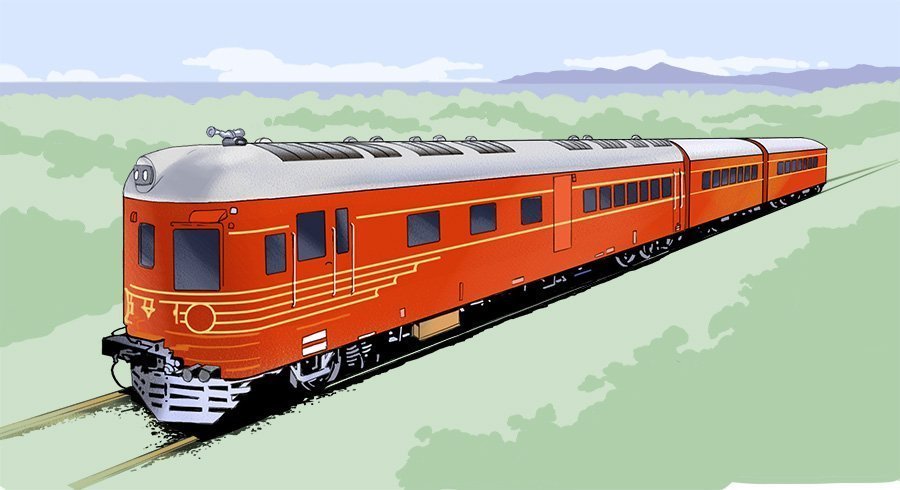
(Image Credit: Michael Payne)
Not really a heritage experience as such, but an important step towards rail playing a greater role in sustainable transport options, this 3km shuttle service began operating between North Beach and Byron Beach in December 2017, using a restored 70-year-old rail car that is claimed to be the world’s first completely solar train. Solar panels on
the train and its storage shed generate the energy required to operate the train on a daily basis, charging the on-board battery bank. Funded entirely by private enterprise, the Byron Rail is expected to alleviate major traffic congestion during peak holiday seasons.
Kuranda Scenic Railway
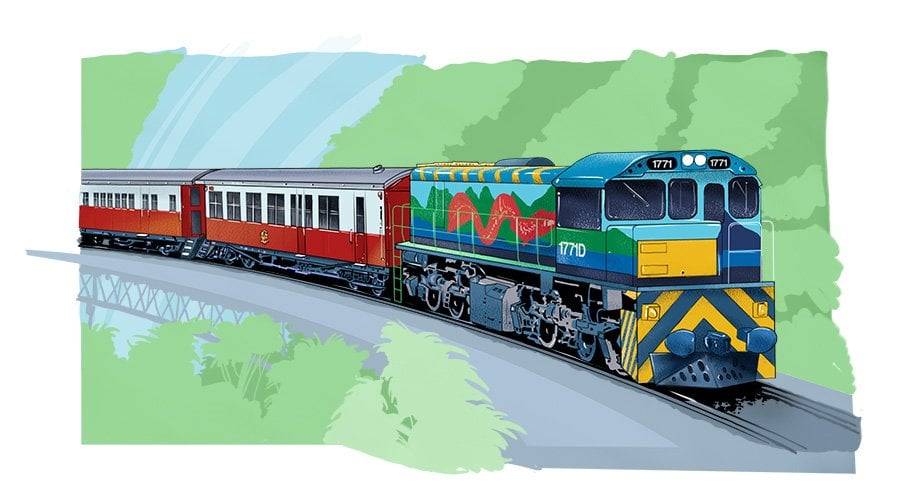
(Image Credit: Michael Payne)
Up in far north Queensland, this relatively short journey takes about two hours one way, up into the hinterland behind the city of Cairns. Passing spectacular waterfalls and travelling through World Heritage-listed rainforest via some 15 tunnels and 55 bridges, the Scenic Railway is one of Australia’s most popular rail experiences. It was originally built to service the mining industry between Kuranda and Herberton in the 1880s, when supplies could not get through to mining camps because of torrential rain. Several miners starved, but many more rail workers lost their lives during the dangerous decade of construction. After roads were improved from Cairns, the railway was converted to tourist use in the 1930s.
The Zig Zag Railway
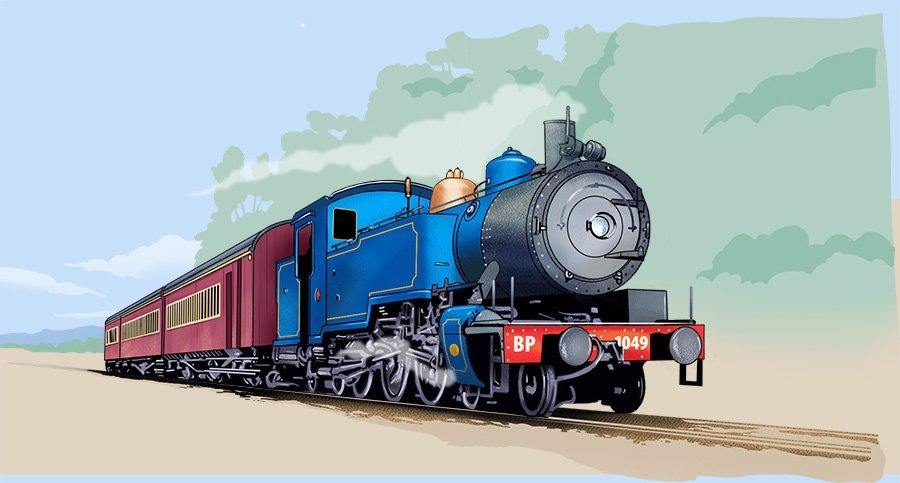
(Image Credit: Michael Payne)
One of Australia’s best-known heritage railways, situated near Lithgow, NSW, this line climbs for 7km along the western flank of the Blue Mountains on what was once the Main Western Line, using railway zig zags to gain height. It was opened by the not-for-profit Zig Zag Railway Co-op in 1975 and staffed by unpaid volunteers. Operations were suspended in 2012 following accreditation issues with the NSW government, and just as it was about to resume services in 2013, the line was severely damaged by bushfires and subsequently by torrential rain. Following extensive trackwork and an overhaul of its steam and diesel rolling stock, the Zig Zag is expected to resume daily tourist services this year.
Mary Valley Rattler
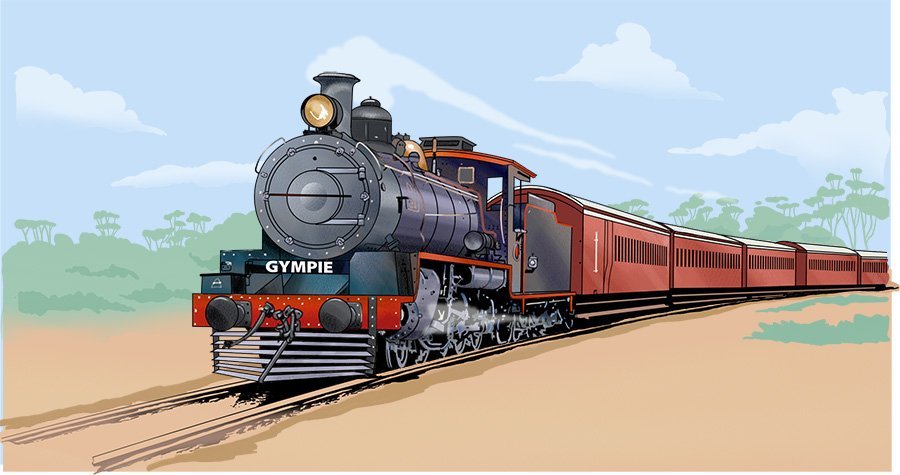
(Image Credit: Michael Payne)
The Mary Valley Rattler, formerly Mary Valley Heritage Railway, conducted steam train trips and tours from Gympie through the picturesque Mary Valley from 1984, and was one of the region’s greatest tourist attractions, described as Australia’s third biggest heritage railway. It was shut down for safety reasons in 2012, and since then major cost blowouts have delayed its reintroduction. However, following another major injection of funds from Gympie Regional Council, the Rattler is expected to be operational again in June this year. This historic 40km journey, in a restored C17 steam train, starts at the gold rush city of Gympie, and after crossing the Mary River, negotiates curves, gradients and bridges to pass through the small country villages of Dagun, Amamoor and Kandanga to Imbil.
The Gulflander
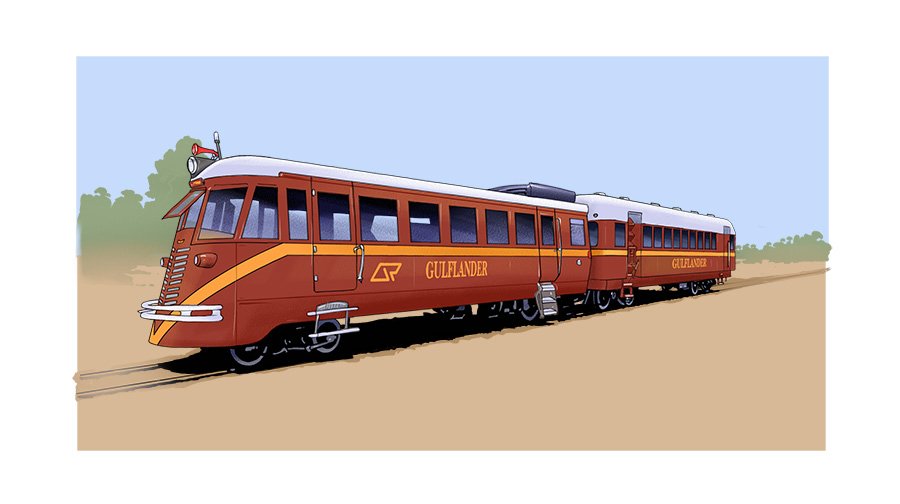
(Image Credit: Michael Payne)
The ‘Rattler’ or ‘Tin Hare’, to use just a couple of its nicknames, carries tourists through the remote wetlands, grasslands and arid savannah of the Queensland Gulf Country between Normanton and Croydon. The Heritage-listed line is rich in history, as well as scenic wonders. During its five-hour, 150km journey from “nowhere to nowhere”, the Tin Hare passes by historic digs from the gold rush of 1885, and explorers Burke and Wills’ most northerly ‘Camp 119’ near Croydon. Originally serviced by steam locomotives, the Gulflander has run only rail-motors since the 1930s.
West Coast Wilderness Railway

(Image Credit: Michael Payne)
This steam locomotive experience chugs on century-old tracks for more than 34km across rivers, through ancient rainforest and along rims of plunging gorges. The West Coast Wilderness Railway is a reconstruction of the Mount Lyell Mining and Railway Company railway that used to haul copper between Queenstown and Regatta Point at the port of Strahan, and was for many years the only transport link between Queenstown and the rest of Tasmania. Today’s popular tourist operation focuses on bringing the harsh mining days back to life.
The Pichi Richi

(Image Credit: Michael Payne)
Travellers who can’t spare the time to do The Ghan can get a taste of it by taking a full-day or half-day trip aboard the Pichi Richi, a restored steam or heritage diesel train operating on the original Ghan route between Port Augusta and Quorn in the picturesque Flinders Ranges, where bluebush-covered hills and ancient rocky outcrops roll past at a relaxed pace. All trains use historic steam or diesel locomotives and restored timber carriages up to 100 years old. The Pichi Richi, named after the pass it travels through, has been run by volunteers continuously since 1974.
READ MORE:




